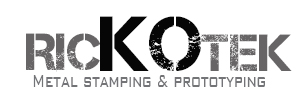A significant part of the manufacturing process is metal forming, allowing the production of various products and parts. Metal formation includes multiple sub-categories, such as deep drawn methodology, which offers the most value with time efficiency, production efficiency, and cost-effectiveness. There are several reasons that the deep draw method has become popular.
A product’s end design dramatically depends on five major elements during the deep draw stamping process, as these areas impact the end design. With no specific order, these elements include draw ratio, part geometry, stress distribution, material thickness, and material type.
Determination of Effectiveness
These five areas impact the manufacturing process and the final product. During the initial designing brief, address each element and continuously updated it throughout the process.
Material thickness and material type have a part with determining the other elements, depending on the final result desired, a material type may be more important than depth.
However, combining all five elements will determine the overall effectiveness of producing a high-quality and acceptable outcome.
Material Thickness
Material amounts within the original blank must correspond with the material amount of a finished part. Materials come in various thicknesses, each having a different direct effect on the material quality and amount by the decrease or increase of thickness. Therefore, considering the required thickness is essential.
Material Type
The material type remains unchanged during the manufacturing process, but it determines the process efficiency and the number of required passes for producing the result.
Specific material types have qualities, which impact how that particular material responds during manufacturing and how acceptable it is to defects.
Stress Distribution
Stress relates to various areas of the manufacturing process. Stress capabilities of a material applied pressure throughout the entire process, and the final product’s stress capabilities.
Furthermore, material and thickness are placed under multiple stresses during the process and to maintain the final shape.
Draw Ratio
Draw ratio can relate to various areas, but in the context of this article, it refers to the necessary amount of material using limited by-product waste.
Certain materials may be drawn more compared to other materials, and certain elements may be drawn less or maintain the blank. Materials which hold a blank can be waste material necessary to be removed.
Part Geometry
A part can be made in nearly any shape, but producing specific forms is more comfortable, requiring a smaller process and having various stress characteristics.
Besides, the material type may impact part geometry. Sometimes, materials may need different geometry than initially planned. Therefore, requiring a different geometry or material.
Concerns over other elements of Deep Drawn manufacturing exist, as different parts are used during the process, such as hydroforming.
Understanding the various elements when processing and delivering an order is essential. It allows you to correctly design, respond concerns, and work with manufacturers for providing the best final product.
Contact RICKOTEK for your metal parts projects now.

